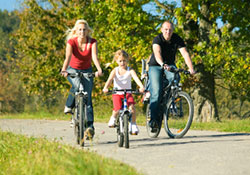Gender and environmental health

iStockphoto
The Declaration of the Fifth Ministerial Conference on Environment and Health recognizes socioeconomic and gender inequalities as key challenges. A review of the literature prepared for the Conference shows marked differences both in exposure and vulnerability among men and women due to social (gender) and biological (sex) differences.
- Women are in charge of collecting water where there is no access. Young girls in rural areas of eastern Europe drop out of school due to lack of suitable hygiene facilities.
- In all countries and regions and all age groups, girls are less active than boys, and the gender gap increases with age.
- Evidence from all over Europe shows that from the age of 1–2 onwards, reported injury rates are higher for boys than girls, with boys consistently more likely to report having had a medically attended injury. These differences are consistent over time and continue through adulthood and into old age.
- Almost three times as many males as females die from road traffic injuries, and data consistently show that men are more likely than women to be driving or walking on the road under the influence of alcohol.
- Data show an increase of women with lung cancer, and the chronic obstructive pulmonary disease death rate rose much faster between 1980 and 2000 for women than for men. Women are at higher risk of lung cancer due to their exposure to smoke from coal fires in their homes and to due to more biological vulnerability. This increase also likely reflects the increase in female smokers, particularly among young women.
- Exposure to chemicals remains the greatest concern. Apart from differences in hormonal status, sex-related differences in sensitivity to toxic substances might be due to differences in detoxifying activity.
- The effects of climate change (manifested in the increase of extreme weather conditions such as hot summers, droughts, storms or floods) affect women more severely than men.



